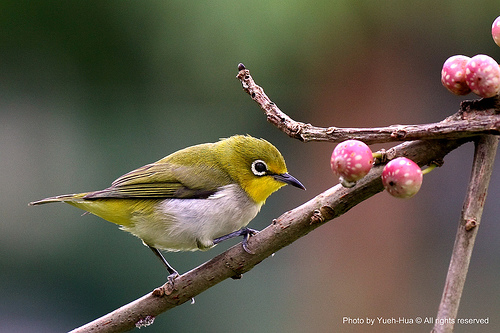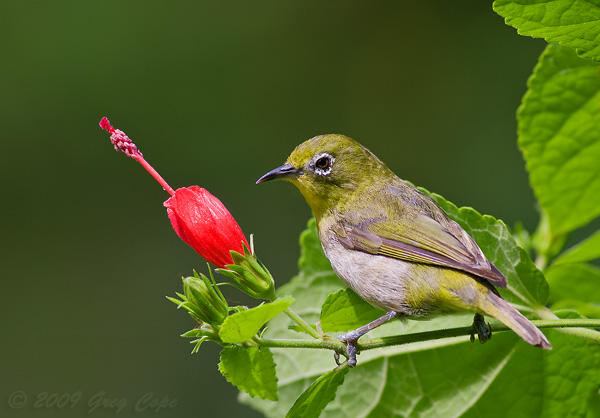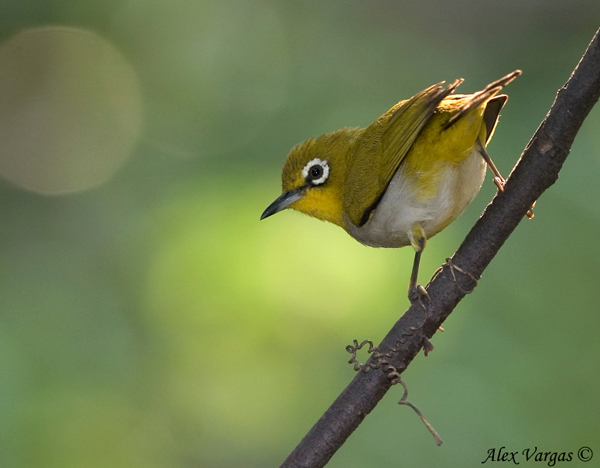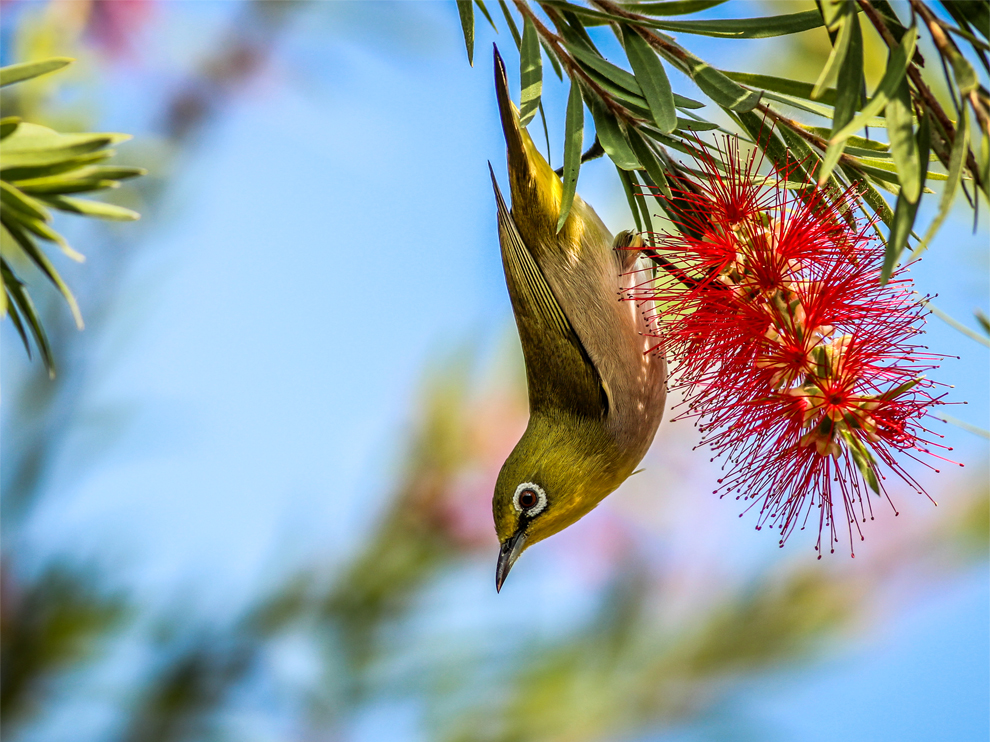
Zosterops japonicus
TAXONOMY
Zosterops japonicus Temminck & Schlegel, 1847, Nagasaki,
Japan. 11 subspecies on different islands.
OTHER COMMON NAMES
French: Zosterops des Japon; German: Japanbrillenvogel;
Spanish: Ojiblanco Japonйs.
PHYSICAL CHARACTERISTICS
Length, 4.7 in (12 cm); weight, 0.4 oz (11 g); wing, 20.5–25.6 in
(52–65 cm); tail, 13.4–18.1 in (34–46 cm); tarsus, 5.5–7.5 in
(14–19 cm); culmen, 3.5–5.1 in (9–13 cm). Olive-green back and
pale gray under, with lemon-yellow throat and undertail coverts.
DISTRIBUTION
Japanese islands, China, Taiwan, Hainan Island, and the
Philippines. Introduced into Hawaii and Bonin Island.
HABITAT
Broadleaf evergreen forests and deciduous forests on lowlands
and foothills of mountains.
BEHAVIOR
Form small flocks after breeding, sometimes move in mixed
flocks, to hunt arthropod prey, and soft fruit and berries. Partial
migrant, appearing in villages and suburban gardens in winter.
FEEDING ECOLOGY AND DIET
Apart from arthropod prey, they feed on fruit and nectar. Famous
examples include nectar from camellia on warm temperate
islands and fruit of ripe persimmon on main islands of Japan.
REPRODUCTIVE BIOLOGY
Breeds in spring, each pair holding a small nesting territory.
The cup-shaped nest is hung from a fork in shrubs and 3–4
eggs are incubated for 11 days.
CONSERVATION STATUS
Not threatened. Common in most parts, but some isolated
populations on islands are vulnerable.
SIGNIFICANCE TO HUMANS
Males were kept in cages for songs. One of the familiar birds
of the countryside in Japan, often featured in various forms of
art and literature.
Photo Gallery of - Japanese white-eye




 Animalia Life
Animalia Life